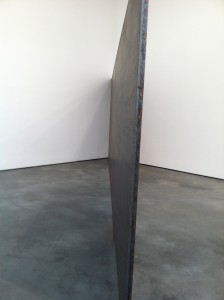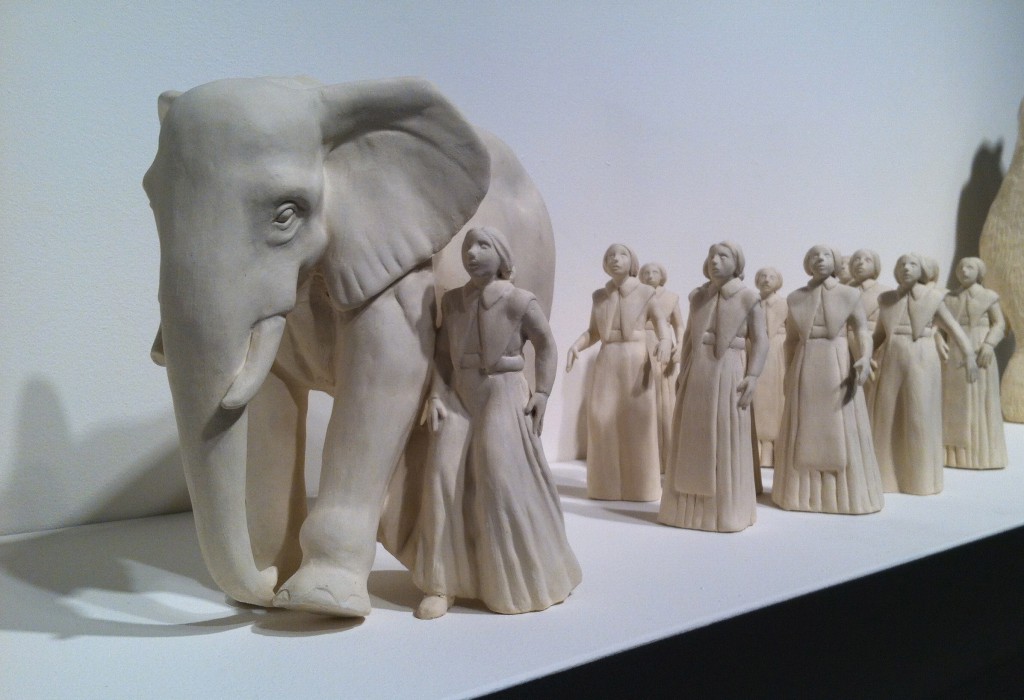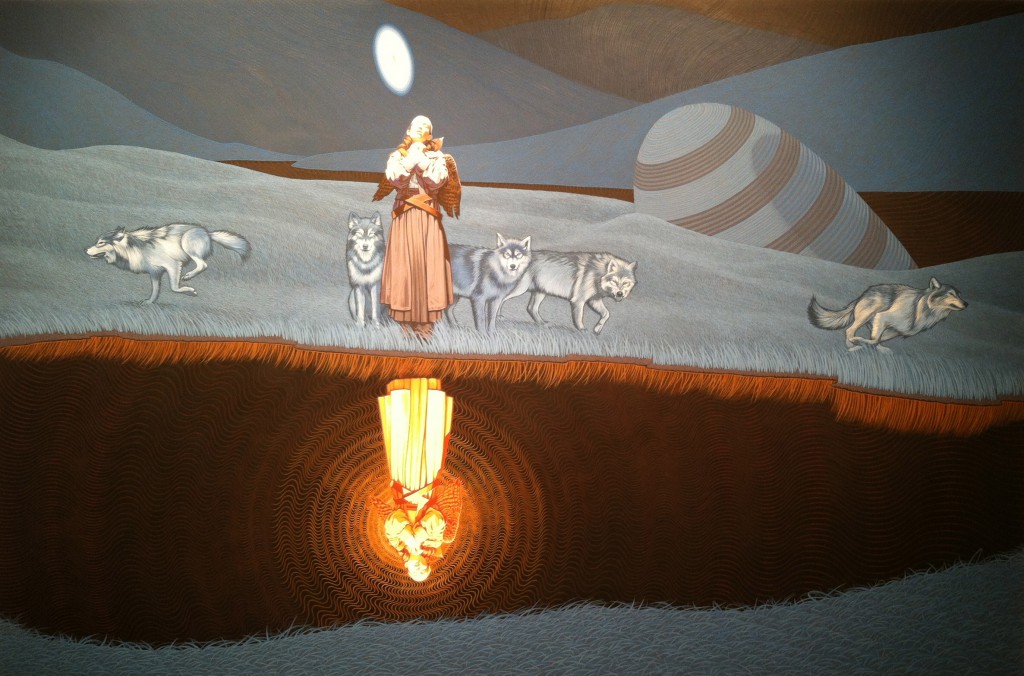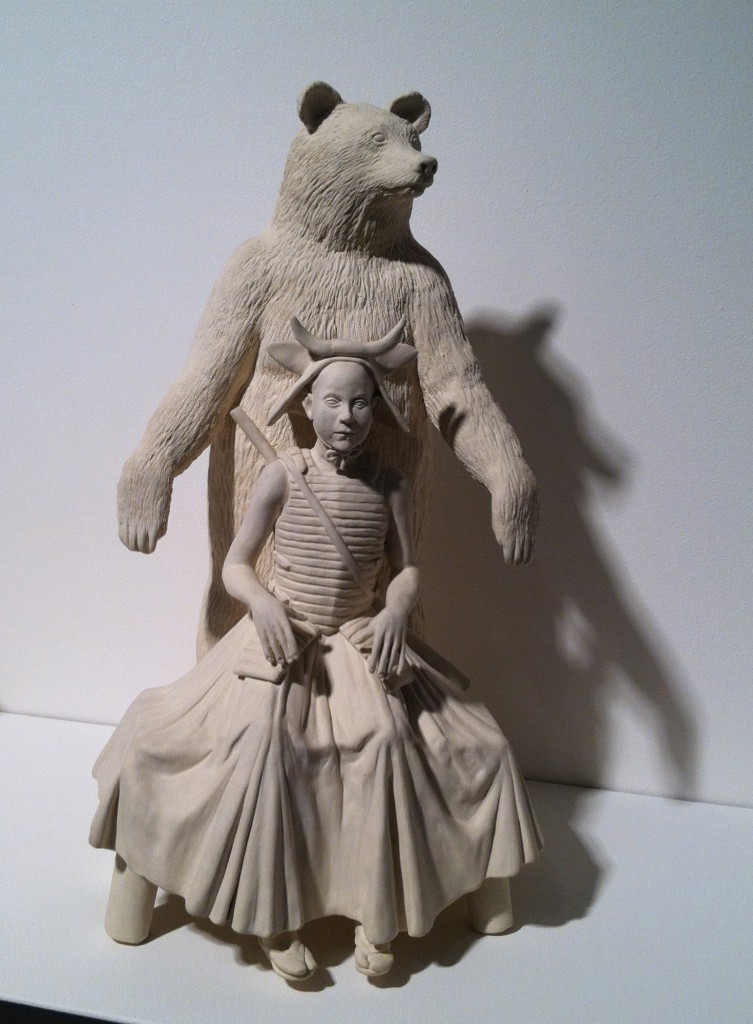Despite my Jeff Koons hyperbole, there are a lot of other good artists to see in the Chelsea galleries. On a recent trip I caught Richard Serra’s early work at David Zwirner (537 West 20th, http://www.davidzwirner.com/exhibition/richard-serra-early-work-6/). With 60,000 square feet in three buildings, and a new space in London, I believe that Zwirner is now the Pac-Man of New York galleries. If I had a small gallery, especially a rented one, I would be worried about that chomping I heard behind me.
We’re used to the monumentality of Serra’s work – the way he uses size and height to block and reveal vistas, and especially how he directs foot traffic with his enormous sculptures. In this Zwirner show, featuring art from 1966 to 1971, we can see the origins of that work in smaller pieces. His hot-rolled steel plate, Strike: To Roberta and Rudy (1969-1971) is clearly an early step on his path to Tilted Arc, the 120-foot-long wall that he installed in Federal Plaza, NY and eventually had to destroy because the local workers got tired of walking around it.
I was attracted to his two neon pieces and especially his four-foot-square lead-plate boxes. Just a little bigger than human scale, and obviously (and literally) weighing a ton, I kept a safe distance but couldn’t help walking around and around to marvel at how they were made by leaning the plates on one another instead of attaching them. It is the fragility of the pieces contrasting with their ability to kill you if you knock into them that resonates with me. Isn’t that an apt metaphor for life?
I also recommend stopping at Ricco/Maresca Gallery (529 West 20th, http://www.riccomaresca.com) to see the current show: Marcos Bontempo’s Dancing in the Void. His abstract figures look effortless, as if he threw a little paint over his shoulder as he was walking away and accidentally created dynamic work that sits on the edge between abstraction and figuration. I would love to know what his process is, and I bet you my recent lottery winnings that it includes struggle and doubt. But you can’t see that in the paintings.
And finally, don’t miss the odd and engaging Paolo Ventura’s The Infinite City at Hasted Kraeutler (537 West 24th, http://www.hastedkraeutler.com/photos.php?a=paolo_ventura&i=58894). He draws and paints and builds small structures that hold tiny lives and miniature conflicts, and ugliness and pain and beauty. His repetition of the forms makes them grow in our brains until a 4″ painting (one of hundreds?) contains the universe. The Lilliputian village of crafted buildings is no more than two feet tall. Sitting on the floor as it does makes us gross and Brobdingnagian. Like Alice after she ate one side of the mushroom, we are too big to bend over and look through the doors. What is happening inside? Is it meant to be about us, or is it part of another world where we don’t belong? I got the definite and slightly creepy sense that I was just a crass voyeur in Ventura’s universe.









